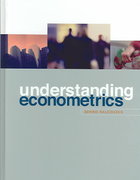Assist with the attached problems;.
1. Let E1, E2, Es be events. Let /1, /2, Is be the corresponding indicators so that /1 = 1 if E occurs and /1 = 0 otherwise. (a) Let IA = 1- (1 - /)(1 -2). Verify that IA is the indicat or for the event A where A = (E1 VE2) (that is "E, or E2") and show that Pr(A) = Pr(E1) + Pr(E2) - Pr(E1 A E2) where (E1 A E2) is "E, and E2". (b) Find a formula, in terms of 1, 12, Is for Ip, the indicator for the event B where B = (EIVE2VEs) and derive a formula for Pr( B) in terms of Pr( E1 ), Pr(E2), Pr(E3), Pr(EIA E2), Pr( E1 A Es), Pr(E2 A Es), Pr( E1 A E2 A Es). 2. In a certain place it rains on one third of the days. The local evening newspaper attempts to predict whether or not it will rain the following day. Three quarters of rainy days and three fifths of dry days are correctly predicted by the previous evening's paper. Given that this evening's paper predicts rain, what is the probability that it will actually rain tomorrow? 3. A machine is built to make mass-produced items. Each item made by the machine has a probability p of being defective. Given the value of p, the items are independent of each other. Because of the way in which the machines are made, p could take one of several values. In fact p = X/100 where X has a discrete uniform distribution on the interval [0, 5). The machine is tested by counting the number of items made before a defective is produced. Find the conditional probability distribution of X given that the first defective item is the thirteenth to be made. 4. There are five machines in a factory. Of these machines, three are working properly and two are defective. Machines which are working properly produce articles each of which has independently a probability of 0.1 of being imperfect. For the defective machines this probability is 0.2. A machine is chosen at random and five articles produced by the machine are examined. What is the probability that the machine chosen is defective given that, of the five articles examined, two are imperfect and three are perfect?8. A dishonest gambler has a box containing 10 dice which all look the same. However there are actually three types of dice. . There are 6 dice of type A which are fair dice with Pr(6 | A) = 1/6 (where Pr(6 | A) is the probability of getting a 6 in a throw of a type A die). . There are 2 dice of type B which are biassed with Pr(6 | B) = 0.8. . There are 2 dice of type C which are biassed with Pr(6 | C) = 0.04. The gambler takes a die from the box at random and rolls it. Find the conditional probability that it is of type B given that it gives a 6. 9. In a forest area of Northern Europe there may be wild lynx. At a particular time the number X of lynx can be between 0 and 5 with Pr(X = :) = = (2 0.650.45-2 (1 =0,...,5). A survey is made but the lynx is difficult to spot and, given that the number present is r, the number Y observed has a probability distribution withPr(Y = y [ X = >) = 0.340.75-4 (0 SysI) (x









